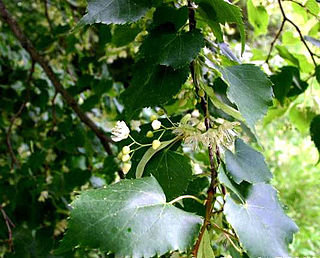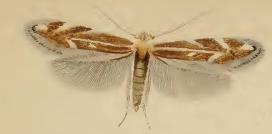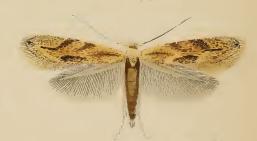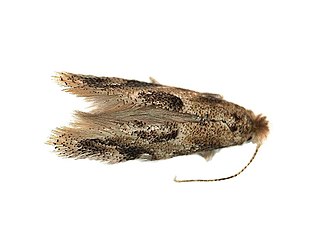
Tilia is a genus of about 30 species of trees or bushes, native throughout most of the temperate Northern Hemisphere. The tree is known as linden for the European species, and basswood for North American species. In Britain and Ireland they are commonly called lime trees, although they are not related to the citrus lime. The genus occurs in Europe and eastern North America, but the greatest species diversity is found in Asia. In Chinese, "椴/duàn" or "椴樹/duànshù" is a general term for Tilia species. Under the Cronquist classification system, this genus was placed in the family Tiliaceae, but genetic research summarised by the Angiosperm Phylogeny Group has resulted in the incorporation of this genus, and of most of the previous family, into the Malvaceae.

Tilia cordata, the small-leaved lime or small-leaved linden, is a species of tree in the family Malvaceae, native to much of Europe. Other common names include little-leaf or littleleaf linden, or traditionally in South East England, pry or pry tree. Its range extends from Britain through mainland Europe to the Caucasus and western Asia. In the south of its range it is restricted to high elevations.

Tilia platyphyllos, the large-leaved lime or large-leaved linden, is a species of flowering plant in the family Malvaceae (Tiliaceae). It is a deciduous tree, native to much of Europe, including locally in southwestern Great Britain, growing on lime-rich soils. The common names largeleaf linden and large-leaved linden are in standard use throughout the English-speaking world except in the British Isles, where it is known as large-leaved lime. The name "lime", possibly a corruption of "line" originally from "lind", has been in use for centuries and also attaches to other species of Tilia. It is not, however, closely related to the lime fruit tree, a species of citrus.

Tilia × europaea, generally known as the European lime, common lime or common linden, is a naturally occurring hybrid between Tilia cordata and Tilia platyphyllos. It occurs in the wild in Europe at scattered localities wherever the two parent species are both native. It is not closely related to the lime fruit tree, a species of citrus.

Bucculatrix frangutella is a moth of the family Bucculatricidae. It was described by Johann August Ephraim Goeze in 1783. It is found in Europe.

Roeslerstammia erxlebella is a moth of the family Yponomeutidae. It is found in all of Europe, east to Japan.

Bucculatrix cristatella is a species of moth of the family Bucculatricidae. It is found in most of Europe. It was described in 1839 by Philipp Christoph Zeller.

Bucculatrix maritima is a species of moth of the family Bucculatricidae. It is found in most of Europe, Russia and Japan. It was first described in 1851 by Henry Tibbats Stainton.
Bucculatrix pyrivorella is a moth of the family Bucculatricidae. It is found in Japan, the Korean Peninsula and the Russian Far East. It was described in 1964 by Hiroshi Kuroko.

Bucculatrix ulmella is a moth of the family Bucculatricidae. It is found in most of Europe, except the Iberian Peninsula, Slovenia and Bulgaria. It was first described in 1848 by Philipp Christoph Zeller.

Bucculatrix bechsteinella is a moth of the family Bucculatricidae. It was described by Johann Matthäus Bechstein and Georg Ludwig Scharfenberg in 1805. It is found in most of Europe, except Greece and Bulgaria.

Bucculatrix demaryella is a moth of the family Bucculatricidae. The species was first described by Philogène Auguste Joseph Duponchel in 1840. It is found in most of Europe, Russia and Japan.

Bucculatrix noltei is a moth in the family Bucculatricidae. It is found from Finland to Belgium, Italy and the Crimea and from the Netherlands to Central Russia. It was described by August Arthur Petry in 1912.

Bucculatrix ulmifoliae is a moth in the family Bucculatricidae. It was described by Erich Martin Hering in 1931. It is found in Great Britain, the Netherlands, Germany, central and eastern Europe. It has also been recorded from Iran.
Bucculatrix improvisa is a moth in the family Bucculatricidae. It was described by Annette Frances Braun in 1963 and is found in North America, where it has been recorded from Ohio.
Bucculatrix muraseae is a moth in the family Bucculatricidae. It was described by Shigeki Kobayashi, Toshiya Hirowatari and Hiroshi Kuroko in 2010. It is found in Japan.
Bucculatrix tsurubamella is a moth in the family Bucculatricidae. It was described by Shigeki Kobayashi, Toshiya Hirowatari and Hiroshi Kuroko in 2010. It is found on Honshu, the main island of Japan.
Bucculatrix hamaboella is a moth in the family Bucculatricidae. It was described by Shigeki Kobayashi, Toshiya Hirowatari and Hiroshi Kuroko in 2009. It is found in Japan (Honshu).
Bucculatrix univoca is a moth in the family Bucculatricidae. It was described by Edward Meyrick in 1918. It is found in Japan, Taiwan and India.













